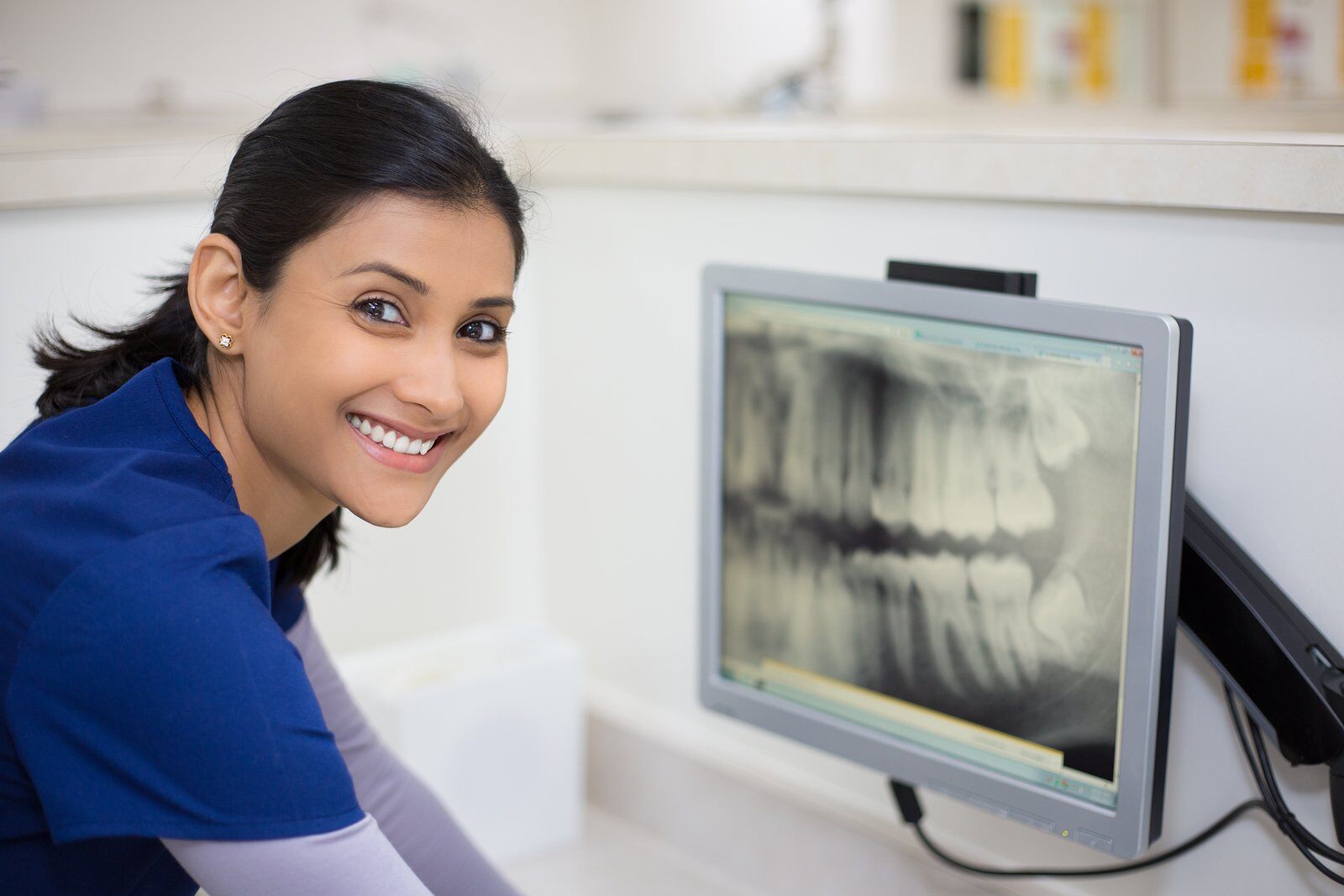Dental X-rays Explained: Your Guide to the Process

X-ray images are one of the most important tools a dentist can use to keep your mouth and teeth healthy. Here’s everything you need to know about dental X-rays.
Why Dentists Need X-rays
Also called radiographs, dental X-rays are images of your teeth that allow a dentist to assess your oral health. X-rays use low levels of radiation to capture photos of the inside of teeth and gums. This can help a dentist identify potential problems such as tooth decay, cavities and impacted teeth. Without X-rays, a dentist cannot identify many dental problems or deliver effective treatments.
What Do Dental X-rays Show?
For adult patients, dental X-rays are used to:
- Spot decay that cannot be detected by the naked eye, such as decay that has developed between teeth or underneath a filling
- Identify cracks or damage in a filling
- Reveal signs of bone loss from gum (periodontal) disease
- Show infection or the death of a nerve within the root of a tooth
- Help the dentist plan, prepare and apply dentures, braces, tooth implants and other dental work
- Identify cancer, cysts or changes caused by various diseases of the body
For children and teenagers, X-rays are used to:
- Spot tooth decay and damage to fillings
- Monitor tooth growth and oral development
- Verify that permanent teeth are developing normally
- Identify impacted teeth
- Help the dentist plan, prepare and apply braces
X-rays may be performed as part of an annual check-up or as needed to address specific dental issues. According to the American Dental Association, children may require X-rays more frequently than adults, because their jaws and teeth are still developing, and they are more prone to tooth decay compared to adults.
How to Take Dental X-rays
Dental x-rays are taken with patients sitting upright in chairs. The dental technician starts by placing a lead apron over your chest and wrapping a protective thyroid collar around the neck. The technician then places the X-ray sensor or film in your mouth for the picture.
The technician will take one or more photos depending on your individual needs. The process usually only takes a few minutes, and patients experience zero or minimal discomfort. Although dental X-rays can be uncomfortable for people who have especially sensitive gag reflexes, this is usually easily managed.
Types of Dental X-rays
Both general dentists and specialty dentists use specific types of X-rays to attain information about specific areas of the teeth and gums. These include:
Bitewing X-rays:
These are usually taken once every year to help identify potential cavities between teeth. They also allow dentists to assess the bone that holds your teeth in place.
Periapical X-rays:
Also known as PAs, Periapical X-rays take a complete picture of a tooth, from the very top (crown) to the root. These X-rays are typically taken when patients show symptoms affecting a specific tooth. They may also be used as a follow-up to a dental procedure. Your dentist can use PAs to help determine if a tooth has deep decay, an abscess or abnormalities in the underlying bone structure.
Occlusal X-rays:
Although they aren’t used as frequently as bitewings and PAs, Occlusal X-rays can yield invaluable information in certain instances. These X-rays are usually performed to show the floor or roof of the mouth and check for impacted teeth, extra teeth, abnormalities, cysts, tumors and problems with the jaw.
Panoramic X-rays:
Also called a panorex, panoramic X-rays are usually taken every three to five years. They are often used by orthodontists to help prepare for braces. They are also used by surgeons in preparation for various types of surgeries including wisdom teeth extractions.
What Are Bitewings?
One of the most common sets of dental X-rays, bitewings detect decay between teeth and identify any changes in the bone thickness. They are very useful for diagnosing gum disease and caries between teeth. Bitewings are placed on the inner sides of the teeth and held steady by biting down on a tab made of cardboard.
Are Dental X-rays Safe?
An X-ray is a kind of energy that is absorbed by dense tissue but able to pass through soft tissue. Since bone and teeth are very dense, they absorb X-ray energy. This allows the dentist to view potential problems and abnormalities without obstruction. Because X-rays expose the body to low levels of radiation, some people worry about the risk of long-term health issues.
Modern dental X-rays are very safe and expose patients to a minimal amount of radiation. According to the ADA, when standard safety precautions are taken, today’s X-ray equipment can eliminate unnecessary radiation and allow the dentist to focus the energy beam on a targeted part of the mouth. High-speed film allows the dentist to limit the amount of radiation each patient receives. A lead body apron is used to further reduce exposure by covering the body from the neck to the knees to protect sensitive areas from stray radiation.
Can You Get Dental X-rays While Pregnant?
Dental X-rays are safe for pregnant women, but dentists usually take extra steps to ensure the safety of the unborn child. Because pregnancy can compromise a woman’s oral health due to specific hormonal changes, it’s important to visit the dentist during your pregnancy. Studies have found that dental X-rays pose very little risk to a fetus; that said, some women prefer to delay dental X-rays until after the first three months, a critical period for fetal development. If you have concerns about how X-rays might affect your unborn child, talk to your dental provider.
How Often Should You Get Dental X-rays?
In general, dentists recommend that patients get dental X-rays once a year. In certain instances, more X-rays may be needed depending on your unique situation. Most patients, whether adults or children, will undergo two routine annual check-up appointments. These are usually scheduled for every six months.
How Much Do Dental X-rays Cost?
Dental X-rays can cost from $30 to $200 depending on the kind and number of tests you need. Your insurance will usually pay for all or a portion of the costs. If you are concerned about costs, talk to your dentist about available payment options which can reduce your financial burden over time.
Find your perfect smile. Book your next appointment at a Gentle Dental location near you.


